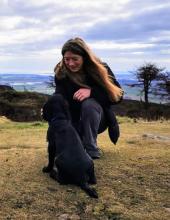Stage Structured Models For Natural Pest Management: Aphids
Natural pest control is critical for reducing agriculture’s reliance on pesticides. Aphids are major agricultural pests causing crop damage by feeding and virus transmission. Natural enemies, including parasitoids, offer an alternative to pesticides and we need a better understanding of how they interact with pests to fully harness their potential benefits.
The Challenge
Aphids are major agricultural pests causing crop damage by feeding and virus transmission. Natural pest control has great potential as a sustainable alternative to increasingly restricted pesticides. However, their potential for aphid suppression is often not achieved, and we need a better understanding of pest-natural enemy interactions and the emergent population dynamics to full harness these potential benefits.
BioSS contribution: Model Development
We have developed mathematical models of parasitoid control when there are multiple hosts present in a spatially heterogeneous landscape. A mathematical model stitches together laboratory measurements on individual species to understand how a system of different species interacts and ensure that the release of parasitoids for bio-control does not have unintended consequences. It also allows scientists to identify the key drivers of the system, and to investigate how best to implement pest control in a changing climate and landscape.
In collaboration with scientists at the James Hutton Institute we have used them to investigate control of cereal aphids under changing climatic conditions and have found that the presence of the parasitoid, more effective at finding aphids it encounters more frequently, can be effective at stablising the system. However, differential effects of drought on the fecundity of different aphid lines can lead to population peaks and crashes.
Future Work
We are currently investigating the effect of landscape-scale change on cereal aphid populations in the presence of multiple species with contrasting migration, over-wintering habits and Barley Yellow Dwarf Virus (BYDV) transmission rates to understand whether the reduction in population that might be caused by natural pest control will be sufficient to counteract the increased movement induced by parasitoid attack.
Publications
Katharine F. Preedy, Mark A. J. Chaplain, Daniel J. Leybourne, Glenn Marion, Alison J. Karley (2020) Learning-induced switching costs in a parasitoid can maintain diversity of host aphid phenotypes although biocontrol is destabilized under abiotic stress. J. Anim Ecol. 5 1216-1229 doi.org/10.1111/1365-2656.13189
Acknowledgements
This work was developed at BioSS by Katharine Preedy in collaboration with Ali Karley at The James Hutton Institute and Daniel Leybourne formally at the James Hutton Insittute, now at the University of Liverpool. It was funded under the Scottish Government’s Strategic Research Programme in environment, agriculture and food and by the UK’s innovation agency.

